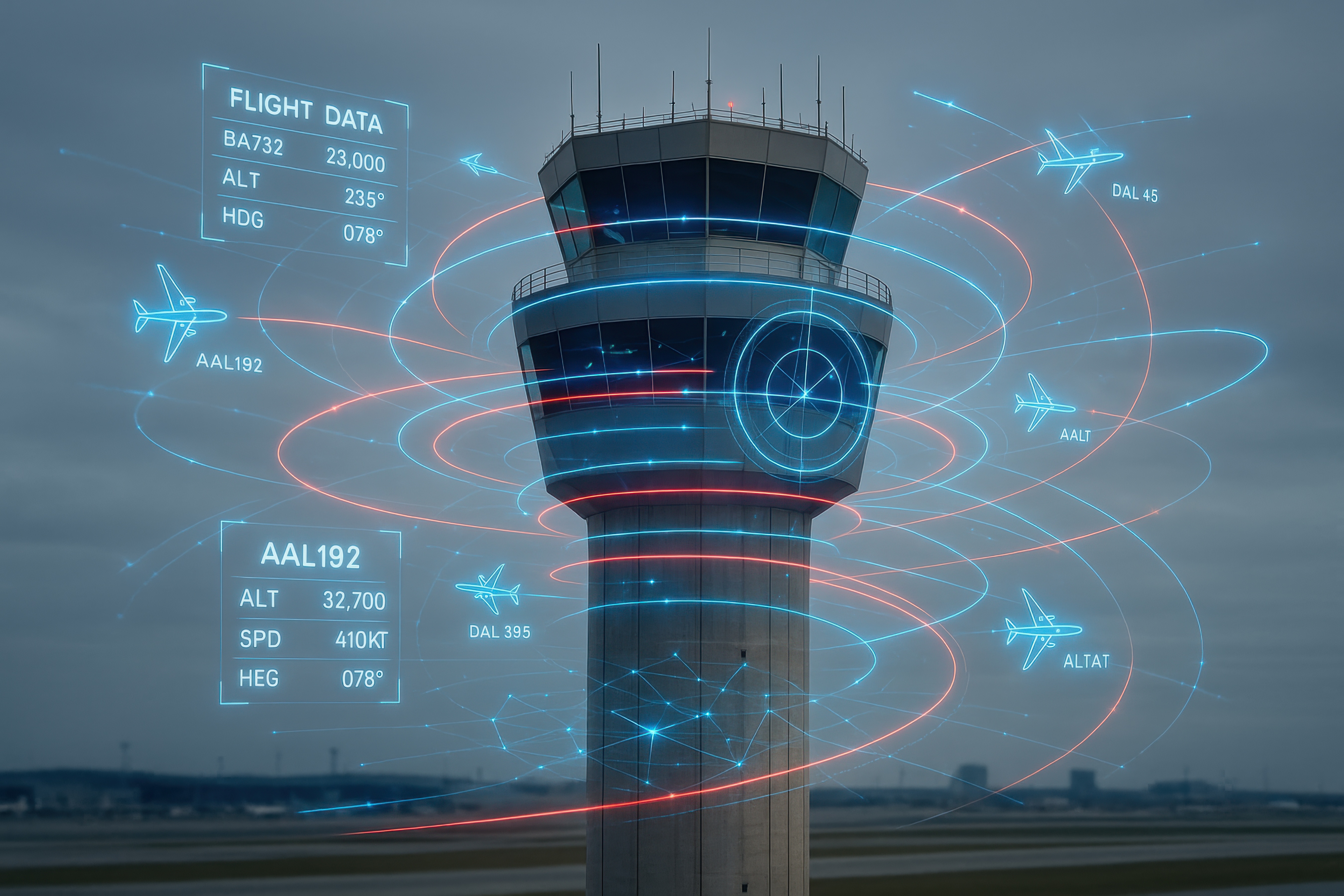Quantum machine learning is transforming equipment maintenance by improving both the speed and accuracy of predictive systems. Unlike classical methods, QML uses quantum principles such as superposition and entanglement to analyze vast sensor datasets simultaneously, detecting subtle failure patterns that traditional systems often miss.
Pilot programs show measurable results, achieving up to 97.2% defect detection accuracy with just 2,000 trainable parameters, while classical approaches require 200,000 parameters to reach 96% accuracy. This efficiency translates into optimized maintenance schedules, reduced unplanned downtime, and significant cost savings.
By enabling predictive strategies based on real equipment conditions, QML moves organizations away from reactive, calendar-based maintenance. Sectors such as manufacturing, aerospace, defense, and energy can now schedule repairs precisely when needed, improving reliability and operational efficiency.
Understanding Quantum Machine Learning in Maintenance Context
What Makes QML Different from Classical Machine Learning
Classical machine learning processes maintenance data sequentially, creating bottlenecks when analyzing complex sensor streams from industrial equipment. These systems examine one variable at a time—vibration patterns, then temperature, then pressure limiting their ability to detect intricate correlations between simultaneous factors signaling impending failures.
QML combines the advantages of quantum computing and machine learning, with the potential to surpass classical computational capabilities by processing and analyzing large datasets in parallel. Quantum computers leverage qubits in superposition, representing multiple states simultaneously. This enables QML algorithms to evaluate thousands of potential failure scenarios at once. What takes hours of computational analysis becomes seconds, enabling real-time maintenance decision-making.
Key QML Techniques for Maintenance
Quantum Neural Networks (QNNs) enhance pattern recognition in sensor data, learning complex relationships between operating conditions and equipment degradation. Quantum annealing, particularly via D-Wave systems, excels at optimization problems scheduling maintenance tasks and allocating resources across complex constraints.
Hybrid quantum-classical models dominate practical implementations, combining quantum processing for intensive subroutines with classical systems for data preparation and validation. Variational quantum algorithms work effectively on noisy intermediate-scale quantum hardware, making QML accessible through cloud platforms like IBM Quantum and D-Wave without requiring dedicated quantum infrastructure.
Enhanced Predictive Maintenance Through QML
Superior Anomaly Detection
QML algorithms analyze vast sensor datasets vibration, temperature, pressure, acoustic signals—with greater speed and efficiency than classical methods to identify subtle anomalies that precede failure. Industrial equipment generates continuous data streams from dozens of sensors. Classical anomaly detection struggles with this volume and complexity, often missing early warnings buried in multi-dimensional data.
BQP's Quantum Enhanced Machine Learning achieves 97.2% accuracy in surface defect detection with just 2,000 trainable parameters in five iterations—an approach powered by simulation-driven optimization frameworks., while classical methods require 200,000 parameters and 30 iterations to achieve 96% accuracy. This efficiency extends across applications: armoured fighting vehicle health monitoring, wind turbine condition assessment, and manufacturing quality control. The technology identifies failure signatures weeks or months before breakdown, providing adequate lead time for planned interventions.
Accurate Remaining Useful Life (RUL) Prediction
Regression modeling predicts remaining useful life, the time remaining until the next failure and typically requires larger datasets with more failure events properly identified. QML excels by finding complex patterns across multiple variables that classical regression models cannot efficiently process.
QML systems consider operating conditions, maintenance history, environmental factors, usage intensity, and component interactions simultaneously. This multi-dimensional analysis produces precise RUL forecasts, enabling maintenance teams to schedule interventions at optimal times neither too early (wasting component life) nor too late (risking catastrophic failure). Aviation particularly benefits for critical components like engines and landing gear, while manufacturing uses QML-powered RUL forecasting to prioritize equipment based on actual degradation rates.
Optimized Maintenance Schedules and Reduced Downtime
QML helps transition from preventative to predictive maintenance, scheduling repairs based on actual equipment needs rather than arbitrary timelines, which reduces unnecessary maintenance and costs. Traditional preventative maintenance follows fixed schedules regardless of actual condition, performing unnecessary maintenance on healthy equipment while potentially missing emerging problems between scheduled intervals.
QML processes multiple constraints simultaneously: equipment criticality, spare parts availability, technician expertise, production schedules, and budget limitations. Manufacturing facilities reduce maintenance-related costs by 15-25% through this optimization, eliminating unnecessary interventions while catching actual problems earlier. More accurate predictions and optimized schedules lead to significant reduction in unplanned equipment downtime, improving operational reliability.
Advanced Optimization with Quantum Annealing
Resource Allocation and Scheduling
Quantum annealing emerges as a promising approach for tackling complex scheduling problems such as resource-constrained project scheduling, analyzing multiple factors including technician availability, spare parts inventory, equipment criticality, and operational schedules. Maintenance scheduling across a fleet or facility involves thousands of variables creating computational complexity beyond classical optimization methods.
D-Wave quantum annealers solve problems including job-shop scheduling in manufacturing and resource-constrained project scheduling, mapping them as energy minimization challenges. The system considers technician skill sets, geographic distribution of assets, spare parts locations, equipment downtime impact, regulatory requirements, and budgets simultaneously. Recent benchmarking shows D-Wave's hybrid quantum-classical solvers competing effectively with industry-leading classical solvers like CPLEX and Gurobi.
Simulating Repair Scenarios
Quantum computing enables high-fidelity simulation of complex repair scenarios, allowing teams to test strategies virtually before field implementation. Organizations simulate alternative repair approaches, parts substitution options, time requirements, cost implications, and risk of secondary failures. This proves particularly valuable for complex industrial equipment, critical infrastructure, and high-value assets like aircraft where real-world trial-and-error carries enormous costs.
Aerospace uses quantum simulation to evaluate engine overhaul procedures, testing different repair sequences to identify approaches that minimize time while maximizing reliability. Energy companies simulate pipeline repair strategies under various environmental conditions to optimize field crew deployment.
Self-Healing Systems Powered by QML
Quantum Machine Learning is emerging as a transformative solution for self-healing software architectures, offering unparalleled speed and efficiency in detecting, predicting, and repairing software failures autonomously. Self-healing systems analyze their own failures, detect anomalies in real-time, and trigger corrective actions without human intervention.
QML leverages quantum computing principles superposition, entanglement, and quantum parallelism to enhance self-healing capabilities, enabling systems to analyze failures and detect anomalies with greater accuracy than classical approaches. When anomalies are detected, QML-powered diagnostics pinpoint root causes faster, reducing false positives. Automated actions include restarting services, reallocating resources, deploying patches, and isolating compromised components.
Self-healing systems improve through continuous feedback loops. QML accelerates this learning process faster convergence to optimal repair strategies. Systems adapt to new failure modes, changing threat landscapes, and shifting operational conditions while developing predictive capabilities that anticipate potential failures before they manifest. The technology complements human expertise automating routine diagnostics while escalating complex issues to operators with relevant context.
Real-World Applications Across Industries
Aerospace and Defense
BQP's Quantum-Powered Health Monitoring System for Armoured Fighting Vehicles achieves approximately 97% accuracy in fault detection, using hybrid quantum neural networks combining classical and quantum computing strengths. In aerospace, QML-driven anomaly detection enables early fault detection in aircraft engines, avionics, and hydraulic systems with minimal training parameters. Early identification prevents long-term damage and extends service life of critical components.
Manufacturing and Energy
Wind turbine condition monitoring represents a key application where quantum machine learning algorithms address challenges of complex feature extraction and high computational costs when dealing with large-scale, high-dimensional datasets. Manufacturing applications include supply chain optimization combined with predictive maintenance, quality control through defect detection, and job-shop scheduling optimization using quantum annealing.
Energy and utilities leverage QML for power grid infrastructure monitoring, oil and gas pipeline integrity, and renewable energy system optimization predicting equipment failures before they cause outages across geographically distributed assets.
Implementation Challenges and Considerations
Technical Limitations
Current quantum hardware faces constraints including limited qubit availability, error rates, and the inherent randomness of quantum learning model outputs, which creates overhead as many executions must be aggregated to obtain predictions. Hybrid quantum-classical approaches provide practical interim solutions, outsourcing difficult subroutines to quantum processors while classical systems handle data preparation and integration.
Cloud-based quantum computing platforms including IBM Quantum, D-Wave, and Amazon Braket reduces infrastructure barriers, eliminating the need for organizations to purchase dedicated quantum hardware. However, data preparation translating maintenance data into quantum-compatible formats requires specialized expertise, and integration with existing maintenance management systems adds complexity.
Cost and ROI
Initial investment encompasses development, integration, and training. Cloud quantum computing substantially reduces upfront hardware expenses. Pilot projects on high-value, sensor-rich assets typically demonstrate value within 12-18 months through measurable downtime reduction and maintenance cost savings of 15-25%.
Value drivers include unplanned downtime reduction (20-40% improvement), maintenance cost savings through optimized scheduling, extended asset life from condition-based interventions, and improved safety. Best candidates for early adoption include high-value assets where downtime is extremely costly, complex systems with extensive sensors, and critical operations where reliability directly impacts business outcomes.
Data Requirements
Quality training data is essential historical maintenance records, sensor data, and failure logs with proper identification of failure events. QML benefits most with large, complex datasets where classical methods struggle. Feature engineering requires collaboration between maintenance experts and data scientists. Continuous learning demands regular model updates as new data accumulates and equipment behavior evolves.
Transforming Predictive Maintenance with BQP
As industries evolve toward predictive, self-healing operations, BQP’s quantum-inspired simulation platform delivers the computational intelligence needed to move beyond traditional maintenance cycles. By combining Quantum Machine Learning (QML) with simulation-driven optimization, BQP enables faster fault detection, precise RUL forecasting, and real-time maintenance decision-making—all without requiring quantum hardware.
BQP empowers engineering and maintenance teams to:
- Predict equipment failures weeks in advance through high-accuracy QML models.
- Optimize maintenance schedules and reduce unplanned downtime by up to 40%.
- Allocate resources dynamically using quantum-enhanced optimization frameworks.
- Integrate digital twins and IoT systems for continuous condition monitoring.
With hybrid quantum-classical architecture, BQP bridges theory and real-world impact—delivering measurable reliability gains and cost reductions across aerospace, manufacturing, and energy sectors.
Book a Demo- Start your 30 day trail :
Explore BQP’s Predictive Maintenance Platform – See how BQP helps your maintenance systems anticipate failures and achieve quantum-level precision in every operation.
Conclusion
Quantum machine learning is transforming maintenance strategies by shifting from reactive, calendar-based approaches to predictive, condition-based systems. Real-world applications across industries show measurable improvements in fault detection, reduced downtime, and maintenance cost savings.
Cloud-based quantum computing platforms and hybrid architectures make it easier for organizations to pilot QML on critical assets, demonstrating ROI before full-scale deployment. Technical challenges remain, including hardware limits, data preparation, and system integration, but rapid advances in quantum computing continue to address these issues.
Organizations that explore QML now can gain a competitive edge through enhanced asset reliability, optimized maintenance spending, and operational insights beyond classical methods. As quantum hardware and algorithms evolve, QML will increasingly enable systems that predict and prevent failures, ensuring safe, efficient, and reliable operations in complex industrial environments.
FAQ’s
What is Quantum Machine Learning (QML) in maintenance?
QML uses quantum computing principles to analyze large sensor datasets simultaneously, detecting subtle failure patterns and enabling predictive maintenance beyond the capabilities of classical systems.
How does QML improve fault detection accuracy?
Pilot programs show QML achieves over 97% defect detection using far fewer parameters than classical methods, allowing earlier identification of potential failures and reducing unplanned downtime.
Can QML optimize maintenance schedules?
Yes. QML evaluates multiple constraints in real time—including equipment criticality, resource availability, and production schedules—to create predictive, optimized maintenance plans that reduce costs and unnecessary interventions.
Which industries benefit most from QML maintenance solutions?
Aerospace, manufacturing, energy, and defense sectors benefit most, particularly for high-value, sensor-rich assets where reliability and uptime are critical.
What are the challenges of implementing QML in maintenance?
Challenges include limited qubits in current hardware, error rates, data preparation, and integration with existing maintenance systems. Cloud-based and hybrid quantum-classical platforms mitigate these issues, enabling practical deployment today.





.png)
.png)




.svg)
.svg)
.svg)
.svg)